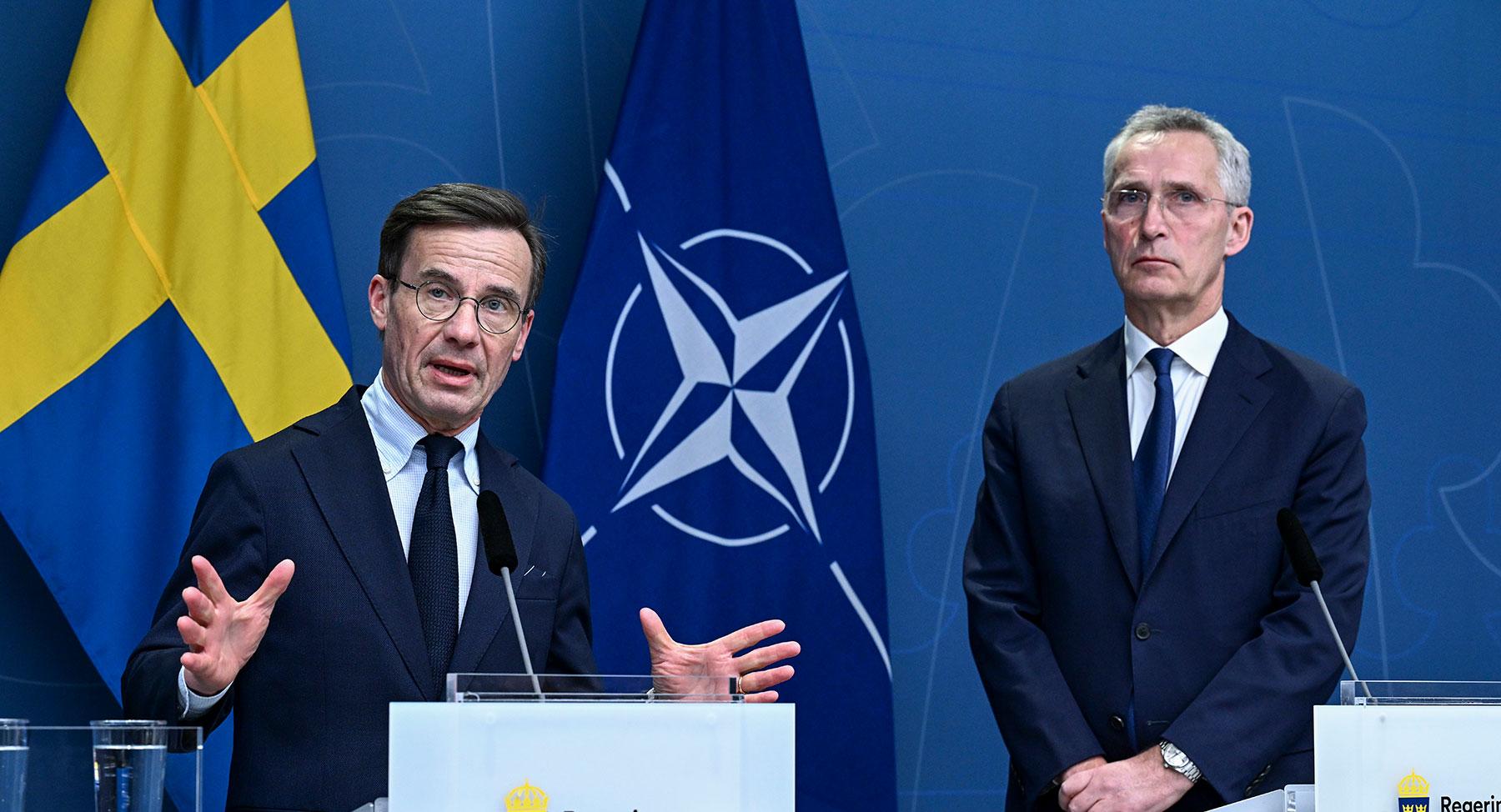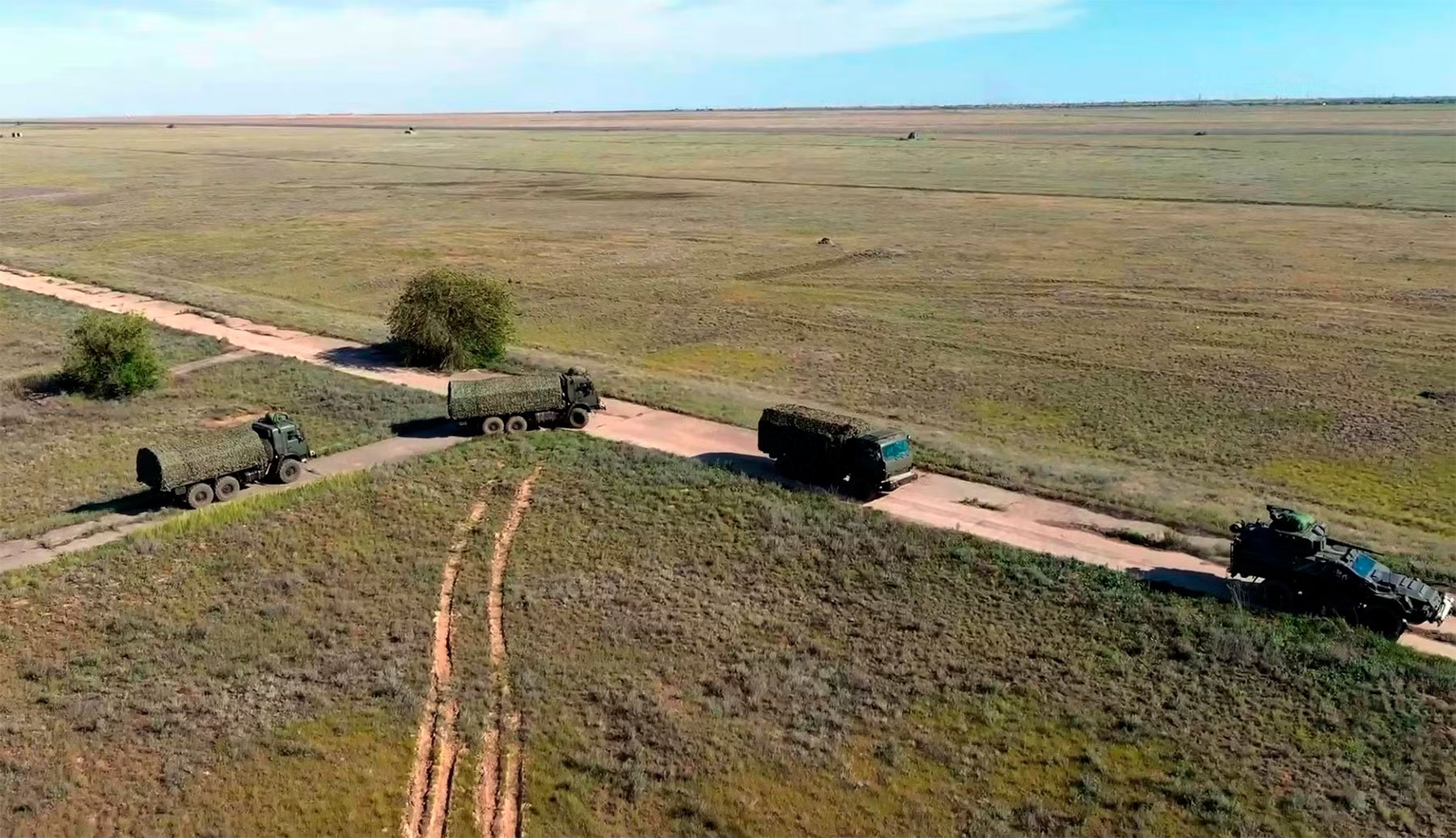NATO troops and a new command centre may soon appear next door to Santa Claus's “village”, as Finland and its allies negotiate over the deployment of NATO troops to Lapland.
Given the developing military and political situation in Northern Europe, the most likely location for NATO to set up a new command centre and deploy its troops would be Rovaniemi, Finland.
First, it is the main logistical centre in the northern part of the country with a large military airfield, stationing the Lapland Wing of the Air Force, and has the necessary infrastructure for a logistical centre as it is where the Jaeger Brigade, the “Arctic” unit of the Finnish Army, is based.
Second, Rovaniemi will be one of the strongholds in the future North Calotte (the northern regions of Norway, Sweden and Finland) military transport corridor.
Third, under the new Defence Cooperation Agreement, the US gained access to Rovaniemi airfield and Rovajärvi training ground, also important for the organization of a future command in Finland amidst the transfer of all the Nordic countries to Norfolk.
Finally, Rovaniemi is located close to strategically important Russian military facilities on the Kola Peninsula.
Finland is rapidly integrating into NATO, aided by close military and political ties built up over decades prior to accession. Its full integration—together with Sweden—will take some time. During the transition period, Finland and Sweden aim to “protect” themselves with guarantees of rapid reinforcements from the US and their Nordic neighbours. Nevertheless, it is already clear that Finland will soon become NATO's most powerful bridgehead close to Russia and will be used by Washington in every possible way in the foreseeable future to deter Moscow militarily. Helsinki, embodying the doctrine of “value-based realism”, will actively assist it in this.
The possibility of Lapland becoming a central NATO stronghold in Northern Europe would be a new major chapter in the alliance's “Arctic pivot”. In recent years, especially after the start of the Russian special operation, NATO has been increasingly and confidently expanding its presence and activity beyond the Arctic Circle.
NATO troops and a new command centre may soon appear right next door to Santa Claus's “village”, as Finland and its allies negotiate over the deployment of NATO troops to Lapland, states Finnish Defence Minister Antti Häkkänen to STT (Finnish News Agency) on August 21. Together with Prime Minister Petteri Orpo, he attended the summer meeting of the National Coalition Party's ministerial group in Rovaniemi, the administrative centre of Finland's northernmost region. Where exactly and when will NATO's growing presence in the “Land of a Thousand Lakes” be deployed?
How is Finland integrating into NATO?
Suomi became NATO's 31st member on April 4, 2023, preceded by months of negotiations and consultations. Although the decision to join marked a final rejection of Helsinki's post-Cold War policy of military non-alignment, the country was already a de facto member of the alliance when it applied in May 2022. Having reached the highest level of military interoperability and integration into the bloc's system, it only remained outside the scope of Article 5 of Washington's Collective Defence Treaty.
Notably, Finland joined NATO without reservations and self-restrictions like those of Norway or Denmark, which led to heated debates about the specific parameters of the country's membership in the military bloc.
Alexander Stubb, who favours Finland's fullest possible participation in NATO’s “defence and deterrence” policies, became the new head of state in March 2024. During his election campaign, he even avoided ruling out the possibility of deploying nuclear weapons on Finnish soil “if the situation demands it”. In his inaugural speech, Stubb articulated Finland's “new” foreign policy doctrine, which actually had developed over a span of decades following the Cold War, becoming the core of its strategic culture. Stubb labelled it as “value-based realism”, implying Finland’s membership in NATO, the EU and its adherence to Western values of “democracy, rule of law and human rights”.
Joining NATO has facilitated defence cooperation both among Nordic countries in the NORDEFCO format, as well as with their key overseas partner. Already at the end of 2023, Finland signed the Defence Cooperation Agreement with the US. The new government of Petteri Orpo, which took office in June 2023, immediately identified the agreement as one of its foreign policy priorities. According to the agreement, the US military was given unimpeded access to 15 military facilities on Finnish territory.
Since Finland joined NATO, despite bilateral agreements with the US, the question of its participation in the alliance's enhanced Forward Presence (eFP) program in Eastern Europe has remained open, although it was highly probable. In this respect, in the past year and a half, Suomi has seen a scenario similar to the “Baltic-Polish” case, which was largely facilitated by the absence of membership reservations.
After Finland and Sweden joined NATO, the entire “northern five” found themselves in the alliance. Given the high level of Nordic defence cooperation, this laid a favourable ground for the consolidation of the alliance’s entire north-eastern flank as a single strike group with the support of the United States, which is likely to lead to NATO troops in Suomi. For example, the traditional NATO “sub-Arctic” exercise Cold Response has been transformed into Nordic Response from 2024, emphasizing the leading role of the Nordic countries in this area. Norwegian Foreign Minister Espen Eide called this process “NATO regionalization”.
What did the Finnish Defence Minister talk about in Rovaniemi?
According to Antti Häkkänen, foreign troops can be stationed on Finnish soil, “even if the country does not face an actual military threat”. First, he implied the forces of Finland's two closest allies—Sweden and Norway. Officially, the discussion of such plans had been confirmed earlier by Peter Hultqvist, the head of the Swedish parliamentary Defence Committee and former Defence Minister. Finnish Prime Minister Orpo believes that “it is clear that the Nordic countries are the closest partners for cooperation within NATO”, but it is important that “other NATO countries are committed and involved in the defence of Lapland and the entire Scandinavian region”. Here, the head of the Finnish government most likely means the two most active NATO players in Northern Europe—the United States and Britain. It is unlikely that he meant the Baltic States, although they are actively in favour of military cooperation with the Nordic states, but the situation has so far been otherwise. For example, 150 Norwegian troops are stationed in Lithuania under the eFP program, and Sweden plans to send 600 soldiers to Latvia in 2025.
The principle behind deploying foreign troops in Finland is that specially designated allied forces can quickly arrive there in a crisis. According to Häkkänen, this “would not necessarily mean an actual military confrontation”. “A tense atmosphere at the border” may necessitate large-scale NATO exercises on Finnish territory, but foreign military personnel would only arrive in the country for a limited time and, if necessary, maintain a “more permanent presence”.
“Value-Based Realism” in Practice
President Stubb expressed his desire to station NATO troops and command on Finnish territory as early as April. At the end of March, he signed the NATO Status of Forces Agreement and the Paris Protocol, which paved the way for allied troops to enter Finland. The decision to station the military and the new headquarters for NATO’s ground forces in the country, which will coordinate ally activities in Northern Europe, was taken at the Meeting of NATO Defence Ministers in June. The issue will be discussed in more detail at the next meeting in February, but the location of the new command centre will be announced earlier, most likely in the fall. By then, the transfer of the new Nordic members and Denmark to NATO's Norfolk Joint Command, which is geographically responsible for the entire North Atlantic, should be completed. As a result, the entire northern and north-eastern flanks of the bloc will be subordinated to a single command centre, which will significantly increase their military and operational connectivity and create a potential unified theatre of operations from the Baltic to the Barents Sea.
Meanwhile, the Nordic countries are actively preparing political, technical, logistical and transport resources for their transfer to Norfolk. In late June, the leaders of Norway, Sweden and Finland held the first trilateral summit since the two Nordic countries joined NATO to coordinate positions ahead of the anniversary summit in Washington. The location of the meeting—Budø, Norway—was not chosen by chance, as it is home to the Norwegian Joint Forces Command. During the summit, the leaders announced plans to establish a military transport corridor that would link the northern regions of the three countries and significantly increase the mobility of their armed forces there.
Finland, putting “value-based realism” into practice, is most actively involved in increasing the connectivity of the North Calotte and developing military infrastructure in their circumpolar region. At the end of May, Antti Häkkänen announced that investments in Lapland's defence would amount to about 300 million euros in the next three years alone. Among other things, the funds will be used to increase the operational capabilities of the garrisons, more intensive military training and the purchase of new F-35 fighter jets to be stationed at the Rovaniemi airbase. In addition, large-scale investments are planned, including through the EU, in transport infrastructure that can be used not only for civilian but also for military purposes. In particular, there is a question of upgrading the railway network—the old bridge over the Tornio River linking Lapland with the Swedish town of Haparanda and the bridge in Kemijärvi, as well as Highway 21, which stretches 459 km parallel to the Finnish-Swedish border from the Gulf of Bothnia to the northwestern edge of the country on the border with Norway.
Where exactly in Finland could NATO’s troops and command centre appear?
Antti Häkkänen identified two main criteria for the location of NATO’s future command centre and NATO troops: 1) quality transport connections and 2) ready infrastructure. The details of the discussions within the Finnish leadership and with allies have not been disclosed yet, but among the most likely candidate cities are Mikkeli, Rovaniemi and Helsinki. All of them fit the Finnish Defence Minister's criteria and, from the point of view of the alliance and Suomi military command, each has its own advantages. For example, Mikkeli, which is close to the Russian border and 304 km away from St. Petersburg, is the headquarter of the Finnish Army, while Helsinki, the capital on the Gulf of Finland, is home to the country's top political and military leadership.
However, given the developing military and political situation in Northern Europe, the most likely location for NATO to set up a new command centre and deploy its troops would be Rovaniemi. There are several important circumstances in favour of this.
First, it is the main logistical centre in the northern part of the country with a large military airfield, stationing the Lapland Wing of the Air Force, and has the necessary infrastructure for a logistical centre as it is where the Jaeger Brigade, the “Arctic” unit of the Finnish Army, is based. Rovaniemi is also just an hour's drive away from Finland's—and Western Europe's—largest artillery range, Rovajärvi, where Finnish and allied forces hold regular exercises. The latest exercises took place in May: at first, cooperation exercises were only carried out by the US military, but then, as part of the Northern Forest 24 exercise, they were joined by Norway’s troops. In total, almost 7,000 soldiers took part in the firing exercises.
Second, Rovaniemi will be one of the strongholds in the future North Calotte (the northern regions of Norway, Sweden and Finland) military transport corridor. After a large-scale reconstruction of the transport network in the Finnish-Swedish border area, it will be directly connected to Narvik, one of Norway's main naval bases with a deep-water port. In the event of a crisis, it would take only days to move troops from there to Lapland: this scenario has already been worked out by the allies during the Immediate Response 2024 exercise at the end of April. A couple hundred units of American equipment and a couple thousand troops were transferred to the Finnish Polar Region through the Norwegian port then. In addition, Finland’s high transport infrastructure quality—and its military significance—is evidenced by the fact that during the Baana 24 exercise in early September, American and German air forces successfully landed their fighter jets directly on a motorway in Lapland, a common practice for the Finnish Air Force.
Third, under the new Defence Cooperation Agreement, the US gained access to Rovaniemi airfield and Rovajärvi training ground, also important for the organization of a future command in Finland amidst the transfer of all the Nordic countries to Norfolk. Additionally, NATO’s military leaders are already looking at Rovaniemi as a location: at the end of May, the leadership of the alliance’s Military Committee, headed by Admiral Rob Bauer, visited Rovaniemi for an inspection.
Finally, Rovaniemi is located close to strategically important Russian military facilities on the Kola Peninsula. For example, the border with Russia can be reached from Rovaniemi in just a couple of hours via a highway that goes straight to Kandalaksha on the White Sea coast, crossing the southern part of the Murmansk region at the narrowest isthmus. Once all Nordic defence initiatives are implemented, the United States will be able to unimpededly project its force right at the Russian border, posing a significant security threat to Russia.
***
Finland is rapidly integrating into NATO, aided by close military and political ties built up over decades prior to accession. Its full integration—together with Sweden—will take some time. During the transition period, Finland and Sweden aim to “protect” themselves with guarantees of rapid reinforcements from the US and their Nordic neighbours. Nevertheless, it is already clear that Finland will soon become NATO's most powerful bridgehead close to Russia and will be used by Washington in every possible way in the foreseeable future to deter Moscow militarily. Helsinki, embodying the doctrine of “value-based realism”, will actively assist it in this.
The possibility of Lapland becoming a central NATO stronghold in Northern Europe would be a new major chapter in the alliance's “Arctic pivot”. In recent years, especially after the start of the Russian special operation, NATO has been increasingly and confidently expanding its presence and activity beyond the Arctic Circle.







